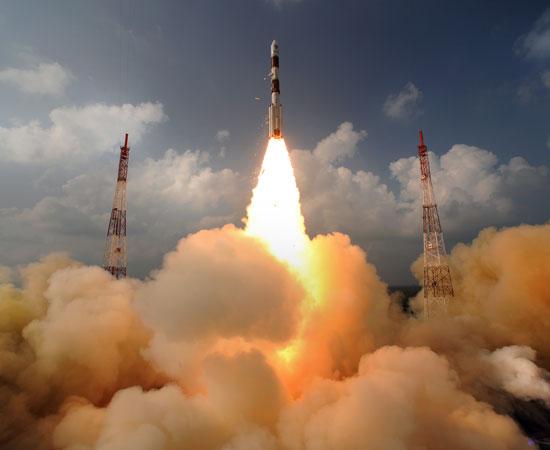 Liftoff: India’s First Mars Mission 5 November 2013 (Photo: ISRO)
Liftoff: India’s First Mars Mission 5 November 2013 (Photo: ISRO)
by David Parmer
2013 has been an active year for Asian space programs. After a successful satellite launch by South Korea early in the year, and ballistic missile tests and tensions from the DPRK (North Korea) in the spring, the fourth quarter has witnessed other notable space events.These include India’s launch on November 5 of its first Mars orbiter mission, a November 7 launch of a Russian Soyuz mission to the ISS (International Space Station) carrying the Olympic torch, and a planned Chinese Chang’e 3 mission to the Moon in December with a planned Moon landing and the deployment of an unmanned lunar rover.
Despite India’s flawless launch, the mission is still a gamble as Mars missions have about a 50% chance of success. China and Japan have both come up short on their Mars missions. India is said to have the world’s sixth largest space program, and its successes include 70 successful satellite launches as well as a Moon mission in 2008. Critics of India’s space program say funds could be better spent on Earth, while defenders point to the immense benefits in communication, education and medicine brought about by the program. Now that the focus has shifted to exploration it may be harder to justify off-world budgets as more than boosters of national pride.
While some see India’s successful launch of its Mars mission as putting it “ahead” of China, the PRC boasts a solid and accomplished space program which includes an astronaut program, an orbiting lab (Tiangong-1) and the upcoming lunar mission complete with lunar rover deployment.
Japan’s progress has been steady, and while her astronauts have hitched rides on various other countries’ vehicles, it is only a matter of time before she develops her own capability to rival both the U.S. and Russia. Of note was a recent June 2012 Diet bill permitting the development of military application space technology including early-warning capabilities.
Rounding out the Asian card are Iran and the DPRK, both of which had launches this year. Critics contend that their stated scientific purposes were simply cover for the development of military capabilities.
 日本語
日本語 English
English 中国語
中国語